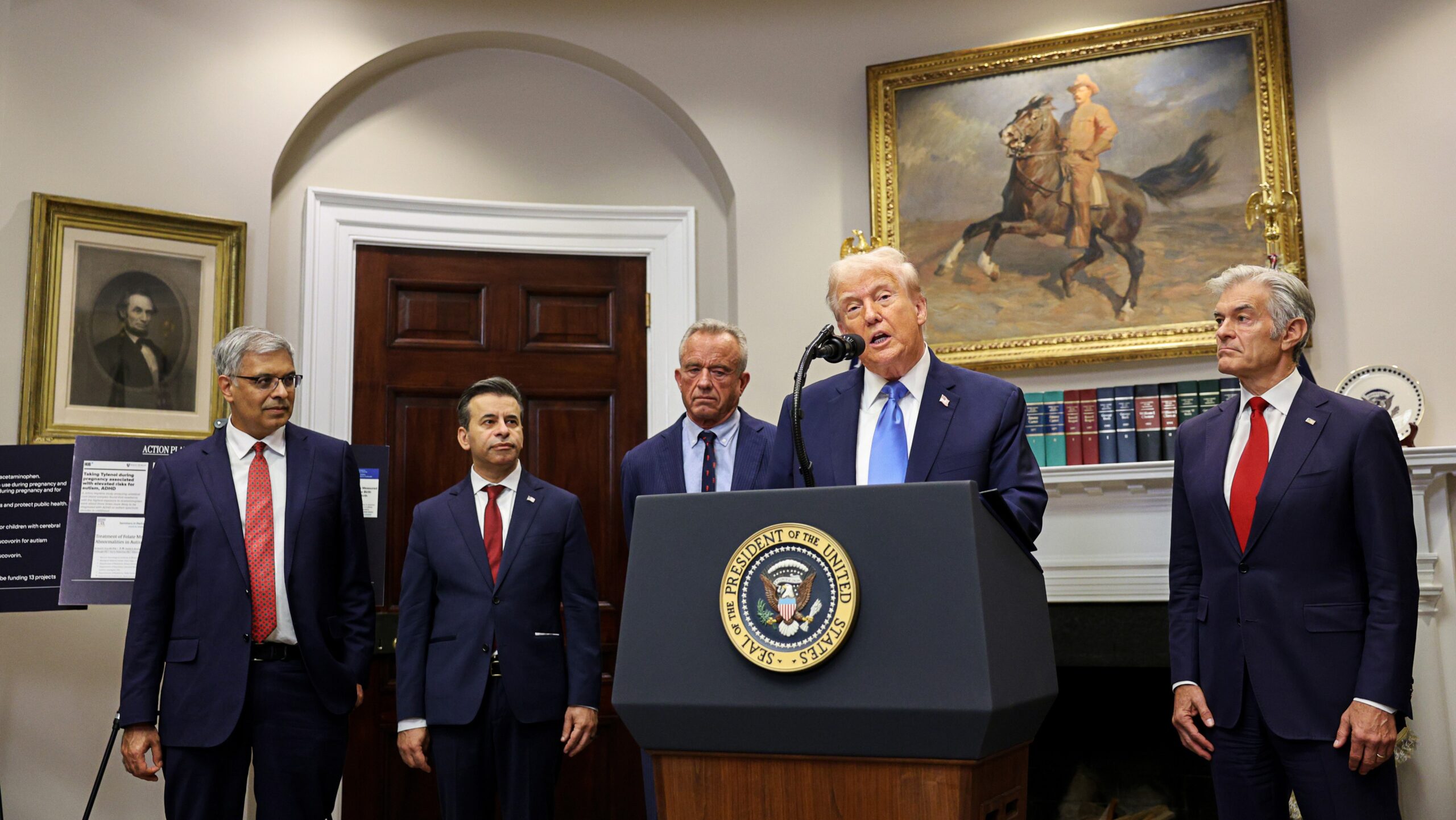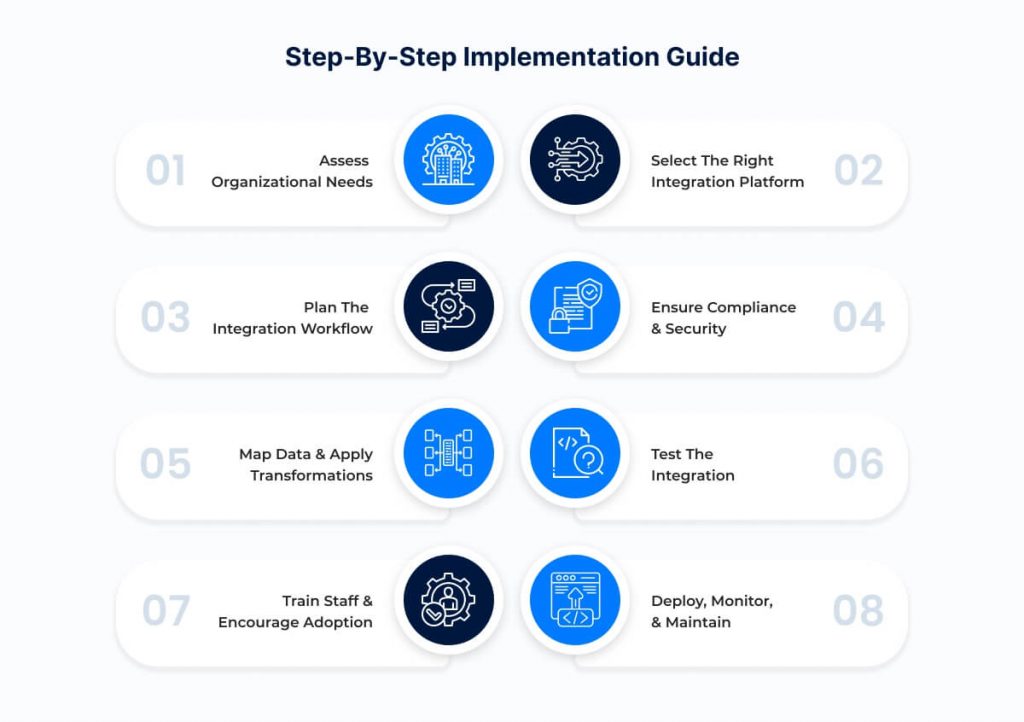By the end of 2025, video content is expected to account for 82% of all internet traffic (bandwidth).
Is your healthcare organization leading the way with this trend or is your content getting lost in the noise?
Trust, clarity, and connection are essential in the healthcare industry, making video a strategic imperative. If your healthcare social media content strategy doesn’t include video, you’re missing out on brand visibility, patient engagement, and revenue growth.
Why Video Is the Cornerstone of Today’s Healthcare Social Strategy
Social media is more than just a marketing channel. It’s a lever for growth, patient engagement, and reputation management.
If your organization isn’t competing with trust-building video content across your social media channels, you’re already behind. Why? Patients are researching care options, checking reviews, and watching videos before they ever book an appointment.
According to Google, people watched YouTube videos related to health conditions 110 billion times globally in 2021. And that number has only grown.
Position your brand as a trusted resource and engage patients in an interactive and compelling way through compelling healthcare content creation and video content for social media.
Social Platforms Prioritize Video—So Should You
Meta, YouTube, TikTok, and other platforms aren’t just for scrolling. Their algorithms are designed to favor video because they drive the most engagement (e.g., likes, comments, shares, and time watching).
Why does this matter? Watch time equals ad revenue. The longer someone watches, the more ads they can serve. Making this a revenue-generating machine for platforms.
For healthcare brands, the message is clear: If you’re not prioritizing video in your social media strategy, your target audience won’t see you. Video builds trust, humanizes your brand, and makes your message memorable.
Video Drives Engagement, Retention, and Trust
Authenticity is one of the primary reasons video content works so well. It brings your providers to life, simplifies complex medical topics, and connects with patients emotionally.
It’s also what your audience wants. Whether it’s a physician introduction, a patient testimonial, or a short reel breaking down a treatment option, video equals connection.
If you want to build awareness, hold attention, educate at scale, and deepen brand loyalty, you’ve got to leverage video content.
Why Healthcare Brands Can’t Afford to Skip It
Simply put, your competitors are already doing it (and not just with generic explainer videos).
They’re building powerful thought leadership series, physician Q&As, patient testimonial reels, and educational content tailored to every step of the patient journey. These videos position them as trusted authorities, allowing them to connect with YOUR audience.
As patient expectations evolve and video consumption continues to rise, healthcare organizations that prioritize video content in their paid and organic social campaigns will set the pace for their competition.
Choosing the Right Video Formats for Paid Campaigns
Not all video formats perform the same across every platform or medical specialty. When deciding which video format to use, ask these questions:
- Is your campaign goal to build awareness, drive clicks, or generate leads?
- Where is your audience in the marketing funnel? Top-of-funnel viewers need different messaging than ready-to-convert patients.
- What are the platform’s best practices?
Let’s explore the most effective video formats, when to use each, and how to repurpose your healthcare social media content across channels for maximum reach and ROI.
Short-Form (Instagram Reels, YouTube Shorts, TikTok)
Short-form videos are great for top-of-funnel awareness. Consider A/B testing snappy, eye-catching, thumb-stopping messaging that delivers value in the first three seconds.
Here are a few healthcare content ideas to get you started:
- Brand storytelling.
- Quick tips and patient-friendly advice.
- Behind-the-scenes culture.
- Provider spotlights.
Motion Graphics & Animated Explainers
Motion graphics and animated explainers are a terrific way to break down complex medical topics into easy-to-understand visuals. Consider repurposing shorter clips in paid social ads, landing pages, or email marketing.
Use these when you want to:
- Explain how a medical device, treatment, or procedure works.
- Provide a step-by-step patient experience.
- Introduce a new product, service, technology, or facility.
Professional Video vs. iPhone Footage: When to Use Each
Sometimes, iPhone footage will be more effective and engaging than professional video because it feels authentic and relatable. However, in many instances professional video is better for building credibility and trust.
Consider a mix of professional and iPhone content to engage a wide audience.
Use professional video for:
- Brand campaigns.
- Executive interviews.
- Investor-facing content.
- Evergreen content, like service line videos.
Use iPhone video for:
- Physician Q&As.
- Trend responses.
- Event coverage.
Repurposing Across Channels Without Losing Impact
A well-planned video content strategy can provide healthcare businesses with weeks of content. Consider building a content library of assets to leverage throughout the week, month, quarter, year, or longer.
Here’s how to repurpose video content for maximum reach and ROI:
- Break longer videos into shorter clips for Reels, Shorts, and ads.
- Change out intros to match each platform’s tone (e.g., short and punchy for TikTok vs. informative and polished for Meta).
- Turn quote-worthy soundbites into carousels, healthcare video ads, and scheduled social posts.
Planning for Performance: Aligning Video With Paid Strategy
The hard truth is most of your audience is not ready to convert. But aligning your healthcare social media, video, and paid strategies ensures your brand is highly visible when they are.
Matching Format to Funnel Stage (Awareness, Engagement, Conversion)

Length, Framing, and Hook: What Works in Paid Social
Optimize your videos and ensure paid social success at every stage of the marketing funnel with these insights.
Length
- Awareness: 15-30 seconds.
- Engagement: Up to 60 seconds, but it must be value driven.
- Conversion: 6-15 seconds, but it must be hyper-focused with a clear call-to-action.
Framing
Framing plays a crucial role in health decision-making. Consider the context of your video and ensure your information is framed correctly for maximum results.
- Positive vs. negative (e.g., success rates vs. failure rates)
- Gain vs. loss (e.g., eat healthy to feel energized vs. eat unhealthily to feel sluggish)
- Causes vs. solutions (e.g., causes of health problems vs. potential solutions)
Hook
You have about three seconds to grab your viewers’ attention. Put your hook front and center to keep your audience engaged. Examples of powerful hooks include:
- A bold statement.
- An interesting statistic.
- An intriguing question.
- A visual that evokes emotion.
Why Paid Video Outperforms Static in Measurable ROI
Video is more engaging and memorable than static content. Plain and simple.
Its ability to tell stories in an engaging way and encourage viewers to act has been proven to drive higher conversion rates.
What Leading Healthcare Brands Are Doing Right Now
Healthcare Providers: Scaling Consistency Across Markets
Health systems and other multilocation healthcare providers use video content on social media to maintain consistent messaging across different markets. Here are a few notable examples:
- Mayo Clinic
Their video-based medical content creation strategy increases patient engagement, educates, and enhances their brand reputation. They share patient stories, virtual tours of their facilities, and healthcare tips on Facebook and YouTube. - Cleveland Clinic
They use Instagram Stories and Facebook Live to connect with patients in real time and deliver consistent, region-specific messaging while retaining a unified brand voice.
Pharma & Device: Humanizing Complex Stories Through Video
Pharma and device companies use video to simplify complex medical concepts and make science more accessible, most often through patient stories. Examples include:
- Eli Lilly, a well-known pharmaceutical company, uses patient stories to highlight the emotional aspects of living with chronic conditions. Their videos humanize the science behind their treatments and medications, making them more relatable.
- Medtronic, maker of devices including the world’s smallest pacemaker, shares patient stories that show how their products make a difference in people’s lives. These humanize Medtronic and promote its real-world benefits.
SaaS & Digital Health: Educating with Efficiency
SaaS and digital health companies use video to deliver clear, efficient education and build trust with their audience. Their video strategy often focuses on making complex healthcare technology easier to understand. Examples include Fitbit (now part of Google), Peloton, and HeadSpace.
Don’t Just Post—Plan: Why Strategy Drives Paid Video Success
The Role of Campaign Architecture in Video Performance
Campaign architecture is a strategic framework that guides the consumer journey, from initial awareness to post-engagement follow-up.
It’s crucial for optimizing video performance by ensuring cohesive messaging across markets, defining clear targeting strategies, and aligning campaign timing with audience behaviors. It also enables effective reporting, budget allocation, and decision-making, ensuring social media for healthcare targets the right audience and drives the desired action at each stage of the funnel.
Building Video Into a Full-Funnel Paid Social Program
A full funnel paid social program guides potential patients through the healthcare journey. Video-based ad content creates more personalized, engaging experiences that drive more appointments and inquiries.
Let’s explore this concept further:
- Awareness: Introduce your healthcare organization and raise awareness about your services with short, engaging videos.
- Engagement: Build trust with testimonials and educational health content for social media. Video can easily address healthcare concerns, making your brand healthcare feel more personal and relatable.
- Conversion: Drive conversions with clear calls to action (e.g., book an appointment, call for more information, or request a consultation).
Remember to Build Strategy First—Then Creative
As a data-driven healthcare marketing agency, Healthcare Success advocates strategy first. Your campaigns must be built on solid insights, focus on patient needs, and align with your unique business goals.
This approach ensures meaningful, measurable results for your healthcare organization.
Let’s Build a Smarter Video Strategy—Together
Paid Social Services for Growth-Minded Healthcare Brands
Our digital marketing agency can develop thumb-stopping paid ad creatives that promote your medical specialty and establish an instant connection with your target audience, ensuring your message resonates with the right people.
Ready to Reach the Right Audience With the Right Message? Let’s Talk.
Our healthcare social media marketing services can transform your business with a powerful, effective healthcare video marketing strategy that converts. Contact us today.






